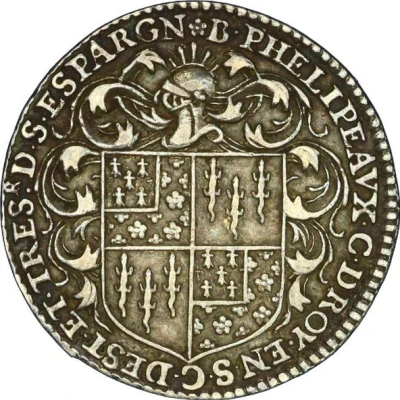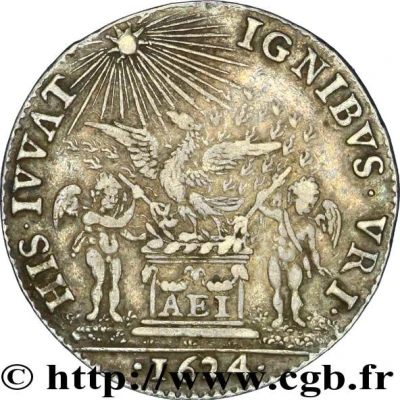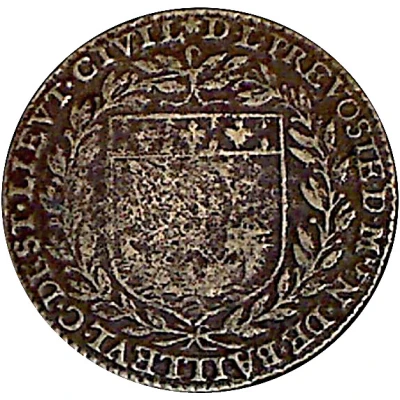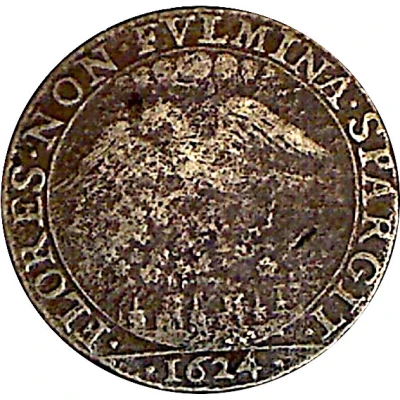


TRÉSORERIE GÉNÉRALE DES FERMES DE FRANCE; Phelypeaux, trésorier de l’Épargne
1624 year| Silver | 5.73 g | 27 mm |
| Location | France |
|---|---|
| King | Louis XIII (1610-1643) |
| Type | Utility items › Counter tokens |
| Year | 1624 |
| Composition | Silver |
| Weight | 5.73 g |
| Diameter | 27 mm |
| Shape | Round |
| Orientation | Coin alignment ↑↓ |
| Updated | 2024-11-13 |
| Numista | N#390702 |
|---|---|
| Rarity index | 100% |
Reverse
Phoenix on its pyre inscribed AEI fueled by two loves; above, the sun.
Script: Latin
Lettering: HIS. IVVAT - IGNIBVS. VRI. ; À L'EXERGUE : .1624..
Edge
Plain
Comment
Reverse engraved 1624 on 1606. A very rare token, absent from reference works.
According to our research, this apparently unpublished token belongs to Balthasar Phélypeaux, seigneur d'Herbault and son of Raymond Phélypeaux, seigneur d'Herbault (1560-1629) and Claude Gobelin. He was a member of the Paris Parliament, Treasurer of the Savings Bank and State Councillor. He died on February 15, 1663. The Trésor de l'Épargne was the State's main treasury, reorganized in 1523 by François I and split into two parts. Extraordinary revenues come from the sale of offices, and are collected in the recette générale des parties casuelles. Ordinary income comes from the estate and direct and indirect taxes, with the Trésorier de l'Épargne at the head of this second part. Initially a single office, it was doubled under Henri II, then triennial under Henri IV. The office was very expensive, costing one million livres in 1625, and was handed down from father to son, barring any difficulties. Raymond Phélypeaux d'Herbault, then his son Balthazar from 1621, worked with Thomas Morant and Vincent Bouhier de Beaumarchais. A place of passage, the Épargne collected revenues and paid expenses according to the roles provided by the Superintendent or the patents ordered by the sovereign. The office's revenues yielded 3 deniers for each pound of silver handled. In 1661, Colbert brought the Epargne treasurers before the Chamber of Justice. They were abolished in 1664 and replaced by the guards of the Royal Treasury, who were clerks rather than officers.



